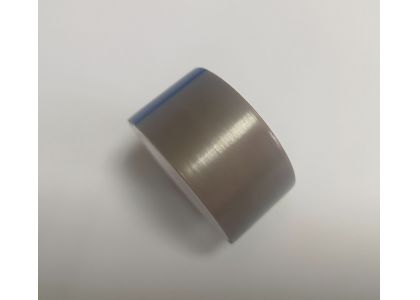
PTFE tape for aerospace, PTFE skived tape for electrical insulation, PTFE film tape for the automotive industry, and PTFE film tape for screen printing have become essential materials in various packaging environments. These tapes not only ensure effective protection of surfaces but also help mitigate issues such as adhesion buildup in heat-sealing machines. This guide will explore best practices for using PTFE film tape in packaging, emphasizing strategies to minimize adhesion problems and improve operational efficiency.
PTFE (Polytetrafluoroethylene) film tape is known for its unique properties, including high thermal resistance, excellent chemical stability, and low friction. These characteristics make it ideal for various applications across multiple industries.
In packaging, PTFE film tape is particularly valued for:
· Heat Resistance: Capable of withstanding high temperatures, making it suitable for heat sealing processes.
· Non-Stick Properties: Reduces the likelihood of materials adhering to equipment surfaces.
· Chemical Resistance: Protects against degradation from exposure to various chemicals often found in packaging materials.
To fully leverage the advantages of PTFE film tape in packaging environments, companies should follow these best practices:
Before applying PTFE film tape, ensure that the surfaces are clean and free from contaminants. Dust, oils, and residues can interfere with adhesion and compromise the tape's effectiveness.
· Cleaning Method: Use a mild solvent or cleaning solution to remove any unwanted materials. Wipe surfaces dry with a lint-free cloth to prevent moisture-related adhesion issues.
· Surface Roughness: If the surface is too smooth, consider lightly sanding it to enhance adhesion.
Not all PTFE tapes are created equal. Depending on the specific application, you may need different types of tape:
· PTFE Tape for Aerospace: Excellent for high-performance applications where weight and temperature resistance are critical.
· PTFE Skived Tape for Electrical Insulation: Offers exceptional insulation properties, making it suitable for packaging electronic components.
· PTFE Film Tape for Automotive Industry: Designed to endure the demanding environments of automotive applications, including resistance to fuels and chemicals.
· PTFE Film Tape for Screen Printing: Ideal for protecting surfaces during screen printing processes, ensuring clean results without contamination.
Choosing the appropriate tape helps prevent adhesion buildup and ensures optimal performance in the heat-sealing process.
Applying PTFE film tape correctly is vital for its long-term effectiveness.
· Temperature and Pressure: Apply the tape at the manufacturer's recommended temperature and pressure settings. Improper settings can lead to insufficient adhesion and increased wear.
· Alignment: Ensure that the tape is applied straight and without wrinkles. Misalignment can create points of failure that may lead to premature wear or adhesion buildup.
Regular equipment maintenance is essential to prolong the life of PTFE tape and prevent issues related to adhesion buildup.
· Routine Cleaning: Regularly clean heat-sealing machines to remove any residue or debris that could contribute to adhesion buildup. A clean work environment leads to better tape performance.
· Frequent Inspections: Check the condition of the PTFE film tape on the sealing bars and other contact points. Replace the tape at the first sign of wear to maintain optimal seal integrity.
Understanding how operating conditions impact PTFE film tape performance is crucial. Factors like temperature, humidity, and pressure can affect how well the tape adheres.
· Temperature Control: Monitor the heat settings of the sealing machines. If the temperature exceeds the tape's tolerance, it can lose its non-stick properties and increase the risk of adhesion buildup.
· Humidity Levels: While PTFE film tape is resistant to moisture, excessive humidity can still cause issues. Maintain consistent humidity in the packaging environment to minimize the impact on adhesion.
A leading aerospace manufacturer faced significant challenges with adhesion buildup in their heat-sealing machines. After switching to PTFE tape for aerospace applications, they reported remarkable improvements. The low-friction surface of the PTFE tape minimized sticking, allowing for smoother operation and reducing downtime related to maintenance. This transition resulted in a 25% increase in production efficiency.
An automotive parts supplier implemented PTFE film tape for the automotive industry in their packaging process. Initially struggling with adhesion issues that caused packaging defects, they adopted a comprehensive strategy that included proper surface preparation, appropriate tape selection, and regular maintenance. As a result, they experienced a 40% reduction in packaging defects and improved customer satisfaction.
A screen printing company utilized PTFE film tape for screen printing to protect their printing surfaces. They discovered that regular replacement and proper application techniques drastically reduced adhesion buildup, leading to cleaner prints and less downtime. Their overall operational efficiency improved by 30%, showcasing how the right tape can enhance performance in niche applications.
Selecting a reliable supplier for PTFE film tape is critical to achieving the best results. Companies should consider the following:
· Product Quality: Ensure the supplier offers high-quality PTFE films that meet industry standards. High-grade tapes are essential for performance and reliability.
· Customer Support: A supplier that provides advisory services can help you select the right tape for your specific application, ensuring compatibility and performance.
· Customization Options: Some suppliers offer customized tape solutions tailored to your requirements, providing added value and better performance.
PTFE film tape serves as an invaluable tool in packaging environments, especially when properly utilized. By implementing best practices such as surface preparation, selecting the right type of tape, correct application techniques, regular maintenance, and monitoring operating conditions, companies can significantly reduce adhesion buildup in heat-sealing machines.
Carefully choosing the appropriate type of PTFE tape—whether it’s PTFE tape for aerospace, PTFE skived tape for electrical insulation, PTFE film tape for the automotive industry, or PTFE film tape for screen printing—can lead to improved efficiency, product quality, and customer satisfaction. Real-world case studies illustrate the effectiveness of these practices, providing compelling evidence for organizations looking to enhance their packaging operations.
As you implement these strategies, you’ll find that the benefits extend beyond improved performance; they also lead to better resource management, lower maintenance costs, and ultimately, a stronger competitive position in your industry.